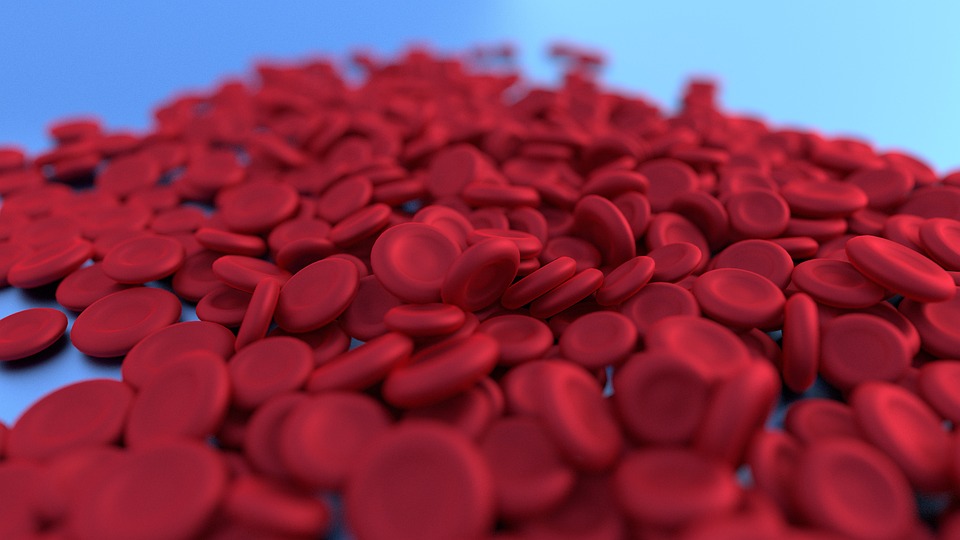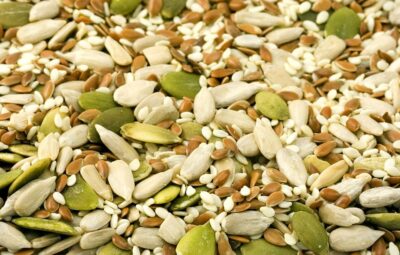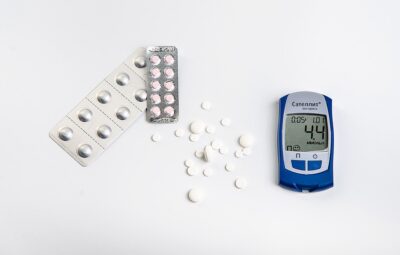ED is a common occurrence amongst those who have either long-term or sudden coronary artery disease.
People who experience chest pain but don’t have any damage or illness with the main blood vessels can also demonstrate dysfunction.
A current study found that 33% of individuals who don’t have coronary artery disease exhibit erectile dysfunction, 46% of those with chronic coronary artery issues demonstrate the disorder, and 58% of those with acute CAD experience it.
Endothelial dysfunction can be strongly predicted by factors such as coronary artery disease, smoking, diabetes, and cardiovascular risk.
Can you fix the issue and get your blood vessel functioning again?
We delve deeper into the endothelium and deliver useful information that will be beneficial to you. Here is a detailed overview of endothelial dysfunction.
What Is Endothelial Dysfunction?
Prior to concentrating on the breakdown, it is essential to go over the fundamentals. Investigating the link between blood vessel health and coronary artery disease could be valuable. The European Heart Journal suggested that this could be beneficial for additional investigation into the malfunction.
Atherosclerosis is a progressive and chronic vascular disease. The endothelium is a dynamic sheet that lines the inside of the blood vessel.
The endothelium is a layer of cells that is incredibly thin and coats the interior of the heart and the blood vessels. Endothelial cells release compounds that reduce the tension and expansion of blood vessels.
An endothelial cell is able to regulate platelet sticking, immune system performance, and how rapidly blood clots. The endothelium creates plenty of factors that regulate:
- Inflammation
- Vascular tone
- Smooth muscle proliferation
- The adhesion of the moving blood cells
The National Institute of Health is of the opinion that all of these elements can have a harmful effect on atherosclerosis and may be the cause of a cardiovascular incident. A common indicator of atherosclerosis is the disruption of the endothelium’s normal activities.
Moreover, the narrowing and blocking of arteries due to the accumulation of cholesterol, fats, and other materials can occur far before the buildup. If the reactive oxygen species and antioxidant defense system become unbalanced, this can cause problems.
The alteration in endothelial function is indicative of endothelial dysfunction. It leads to an inflammatory environment, decreased blood vessel widening, and an increased propensity for clotting.
Basically, the malfunction can bring about inflammation and reduce the amount of vasodilators, mostly the type of nitric oxide made in the lining of the blood vessels.
We can tell when a heart attack or stroke is potentially approaching by examining endothelial dysfunction. Ill health can be caused by unstable cholesterol levels, smoking, hypertension, or diabetes.
An increase in blood flow causes an artery to become wider, this phenomenon is known as flow-mediated dilation (FMD). Ultrasound is used to identify FMD by evaluating the expansion of the brachial artery shortly after the arm has gone through a phase of inadequate blood circulation.
Can You Reverse Endothelial Dysfunction?
It appears that particular interventions may be effective in restoring endothelial dysfunction, based on recent research.
Alternative treatments, both natural and through medicines, may be good for the arteries and blood. Further research is needed to determine their sustainability and lasting impact.
Certain medications are able to enhance vascular endothelial performance over a period of half a year. Investigators, however, must analyze further if enhancements in the blood vessels, lining of the blood vessels, and circulation will provide an advantage to the coronary artery. And provide a clinical benefit.
The majority of research looks into how endothelial function can be improved in the initial stages of atherosclerosis. Mainly in young adults and children.
When the disorder is identified before the symptoms have become too severe, the chances of being able to fix it are greater. At the outset, improved public health can be achieved if people with medical issues practice tactics that maintain the endothelium in good condition.
How to Reverse Endothelial Dysfunction
Multiple connected reports discuss the association between vascular endothelium and cardiovascular illness. But only a small number pay attention to how to improve endothelial dysfunction.
For those who are knowledgeable about the vascular endothelium and its effects on nitric oxide, it should be simpler to come up with a remedy for the malfunction.
Natural Methods
Experts have discussed the incorporation of food ingredients. This encompasses dietary supplements and natural substances to enhance the functioning of the endothelium.
Studies indicate that certain natural ingredients and foods may be advantageous for the maintenance of good vascular and endothelial health.
Any problems with the functioning of the endothelium can result in serious heart conditions. It can also have a negative impact on oxidative stress and have a major effect on the endothelial cells.
It is paramount for those vulnerable to heart issues or blood-flow difficulties to ensure the durability of their coronary artery.
1. Food and Diet
Studies suggest that things like fruits, vegetables, and other foods containing polyphenols and other food-derived products can stimulate the pathways in more advanced cells. And promote a better nitric oxide formation.
These options include red berries, blackberries, and grape-derived products. Other choices are hot chocolate, dark tea, green tea, and omega 3 oils.
The consumption of these items revealed a betterment in vascular wall disorder, especially in people with heart disease.
This review, though limited and experimental, indicates that natural substances could potentially reverse the course of the situation. Predominantly for those at risk of coronary heart disease.
People at risk of obtaining heart disease and individuals needing to regularize their arterial lining should eat nutritious food.
Eating ginger, fatty fish, nuts, walnuts, berries, and garlic can help improve blood flow.
2. Physical Activity
Physical activity is necessary to re-establish the correct circulation of blood. Getting physical activity can help control problems with functioning and lessen some of the extra weight.
3. Quit Smoking
People who suffer from conditions that affect the endothelium are also advised to give up smoking. Cigarette smoking leads to a buildup of plaque in the blood vessels, making it exceptionally hard for the heart muscle to operate.
4. Manage Stress
Stress is another thing to manage. The effects of stress can be very significant on the circulation of blood and the heart’s muscles. If you neglect the issue for an extended period, the blood can become thicker, which increases the risk of having heart problems.
If you are unsure of the best place to begin, speak to an expert. They can advise you to start exercise counseling. Incorporate eating habits that are beneficial to your health, learn how to better cope with stress, and consider taking medication if needed.
5. Vitamins
A report in the BioMed Research International Journal suggested that things like tetrahydrobiopterin, various antioxidants, and vitamins might be beneficial when it comes to activating endothelial progenitor cells. Additional reports seem to support these claims.
The American Heart Association’s Journal indicated that the normalizing of genetic endothelial function of endothelial nitric oxide synthase (eNOS) and NADPH oxidase activities requires both vitamins C and E.
Studies done on both animals and people have shown that taking antioxidant vitamins C and E can improve the functioning of the endothelium. Vitamin C, either by itself or paired with Vitamin E, can increase production of nitric oxide and reduce hypertension in animals that have hypertension.
At the end of it all, when the right amount of vitamin C is ingested, it can counter the possibility of endothelial dysfunction that hypertensive and congestive heart failure patients can experience.
Negative Effects of a High-Fat Diet
Results from a meta-analysis show that after adults eat a high-fat meal, the blood vessel performance of the arm is decreased. This decreased performance, which is measured using the brachial artery’s flow-mediated dilation, is linked to higher risk, sickness and mortality concerning cardiovascular health. Scientists studied if teenagers would show comparable developments in flow-mediated vasodilation after a meal.
In a limited trial with ten teenage participants, researchers found that a meal that was both high in fat and protein did not cause the same level of arterial constriction that a high-fat regimen normally would. The addition of wheat fiber that does not dissolve in water to a meal with a high fat content diminished post-meal hypertriglyceridemia and the changes it caused to the flow mediated arterial dilation. Researchers suggest that larger studies should be done in order to explore the connections in greater detail.
Consuming a diet that is high in fat along with the typical Western-style foods can disrupt the functioning of the endothelium, lasting as long as four hours. A research project testing the effects of phytonutrients on 38 healthy adult participants was launched, using a randomized, double-blind, placebo-controlled study design to examine the mitigation of a potential risk.
The results of the study showed that taking daily doses of concentrated fruits and vegetables, which were supplemented with antioxidants, increased the results of the brachial artery reactivity test (BART) following consumption of a meal that had 50 grams of fat.
The group that took the supplement saw a marked decrease in their blood levels of total and LDL cholesterol and a considerable rise in nitric oxide metabolites.
This research looked further into the finding that taking antioxidant vitamins C and E could prevent the important shrinking of blood vessels that occurs after one eats a lot of fat.
A Healthy Plant-Based Diet and Healthy Lifestyle Are Preventive
Phytonutrients/phytochemicals are compounds unique to plant-based foods. Many of them have antioxidant and anti-inflammatory benefits.
An abundance of fruits, veggies, phytonutrients, and antioxidants can be connected to excellent health, including a drop in cardiovascular risk factors. Studies have shown that the phytonutrients and antioxidants in food can have favorable consequences for the blood vessel wall’s production of nitric oxide. It appears that the advantages of these discoveries have been known for some time, only they were overlooked in the medical strategies that have been fashioned.
Studies have revealed that Omega-3 fatty acids have a beneficial effect on vascular health in individuals with metabolic syndrome, obesity, high cholesterol, and who are smokers. Two out of five studies reviewed showed that people with diabetes could gain advantages from consuming omega-3 fats. Specific vasoprotective effects of omega-3 fatty acids include:
- Anti-inflammatory activity
- Decreased blood pressure
- Improved vasodilation as measured by FMD
- Increased antioxidant protection
Naturally occurring antioxidants can have important protective effects against endothelial dysfunction:
N-acetylcysteine (NAC)
- Has potent antioxidant effects.
- Essential to synthesis of glutathione.
- Inhibits inflammatory cytokine release, NADPH oxidase expression, and white blood cell adhesion.
- Improves endothelial response with and without presence of atherosclerosis.
Vitamin C
- Scavenges superoxide, therefore preventing lipid peroxidation, platelet/neutrophil activation, adhesion molecule upregulation, and scavenging of NO.
- Scavenges reactive nitrogen species, inhibits LDL oxidation.
- Can improve endothelium response in diabetes, hypercholesterolemia, hypertension, smoking.
- The lowest measured tertile of vitamin C in a study of type 1 diabetics 0.25 – 0.86 mg/dL (14.02-49.01 umol/L) versus the highest tertile 1.48-2.10 mg/dL (84.01 to 118.99 umol/L) was significantly associated with greater carotid intima-media thickness, a presumed sign of atherosclerosis.
- Administration of vitamin C restored nitric oxide bioavailability and reversed a blunted vasodilation response to acetylcholine.
Vitamin E
- Scavenges hydroperoxyl radicals as a lipid-soluble antioxidant.
- Protects endothelial function in hypercholesterolemia and smoking.
Supplementation
Sticking to a nutritious diet is critical for resolving atherosclerosis and dysfunctions involving the interior lining of blood vessels. Supplementing one’s diet may be helpful, particularly when it comes to dealing with a lack of micronutrients, which is widespread but even more common among those with high blood pressure, heart problems, environmental contaminant exposure, and those taking prescription medication. [17]
There is evidence from multiple clinical studies that adding nutrition supplements can have a substantial effect on improving blood flow in the arteries.
Vitamin C
Vitamin C, also known as ascorbate or ascorbic acid, has attracted a lot of attention because of its powerful protective properties as an antioxidant, and because we humans are uniquely unable to produce it, unlike the majority of other mammals.
- Vitamin C is required for the function and optimal permeability of the endothelium and its insufficiency is noted as a cause of endothelial dysfunction.
- A small prospective study indicated that daily antioxidant supplementation with 1 gram of vitamin C and 500 mg of vitamin E significantly improve endothelial function as evidenced by restoration of flow-mediated dilation. Beneficial effects disappeared 1 month after supplementation ceased.
- Vitamin C (1 gram/day) and vitamin E (440 IU/day) significantly improved FMD in adult male hypertensive patients as evidenced in a randomized double-blind study.
- Supplementation with vitamin C (500 mg/day) and vitamin E (400 IU/day) also significantly improved endothelial function and FMD in a randomized double-blind study of children with hyperlipidemia 9-20 years of age.
Arginine
Taking Arginine may be especially beneficial in cases of impaired endothelial functioning.
- Administration of arginine was found to improve endothelial dysfunction in subjects with high cholesterol and atherosclerosis.
- L- arginine, applied intravenously or via intracoronary administration improved endothelium-dependent vasodilation in such patients. The D-arginine form is not effective.
- Intervention with arginine and vitamins B6, B12, and folic acid significantly improved vascular function in 40 individuals with moderately elevated blood pressure. Homocysteine and systolic blood pressure were significantly reduced in this randomized double-blind study as well.
Different nutrients have been shown to have the ability to reduce hypertension, thereby decreasing anxiety and limiting further harm to the interior wall of the blood vessels. These include:
- Alpha lipoic acid
- Calcium
- CoQ10
- Flavonoids
- Gamma-linolenic acid
- Garlic
- L-carnitine
- Magnesium
- Melatonin
- Monounsaturated fats
- N-acetylcysteine
- Omega-3 fatty acids alpha linolenic acid, EPA, DHA
- Pomegranate
- Potassium
- Pycnogenol
- Resveratrol
- Taurine
- Vitamin B6
- Vitamin C
- Vitamin D
- Vitamin E, gamma/delta tocopherols, tocotrienols
- Zinc
Coenzyme Q10
Coenzyme Q10 is created internally in the body, though the production of it can be hindered by HMG-CoA reductase inhibitors (known as statin drugs). Taking 150 mg of CoQ10 each day can boost antioxidants, reduce IL-6 linked to inflammation, and lessen oxidative stress in persons who have coronary artery disease.
Melatonin
A randomized, double-blind, controlled experiment examining 20 people with progressed atherosclerosis and coronary artery disease showed that ingesting 10 mg of melatonin caused a major decrease in the amount of ICAM, VCAM, and CRP, as well as a large rise in nitric oxide.
Vitamin B12
Initial studies indicate that cobalamin may serve as an aid in the processing of nitric oxide. Researchers believe that glutathionyl-cobalamin is a performing type of B12 which is involved in generating and performing nitric oxide, and thus has a hand in defending cell membranes, promoting immunity, and maintaining vascular health.
Pomegranate
A comprehensive examination of 16 different studies concluded that consuming pomegranate juice regularly had a clear impact on the inflammation markers hs-CRP, IL-6, and TNF-alpha.
Dark Chocolate
The study of 22 heart transplant patients revealed that consuming dark chocolate with high flavonoid and antioxidant levels improved coronary vascular function, cut down oxidative strain, and reduced platelet adherence.







